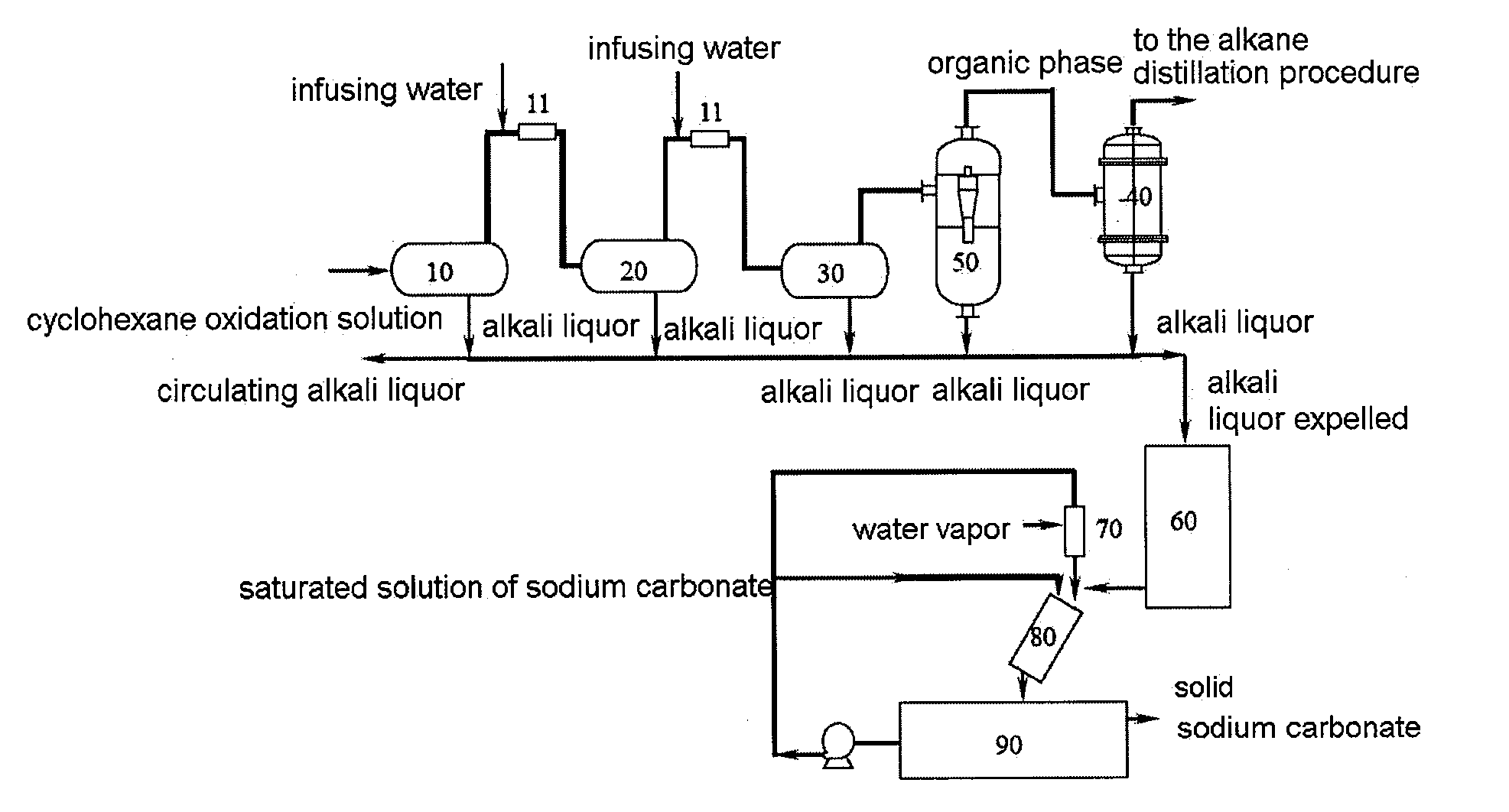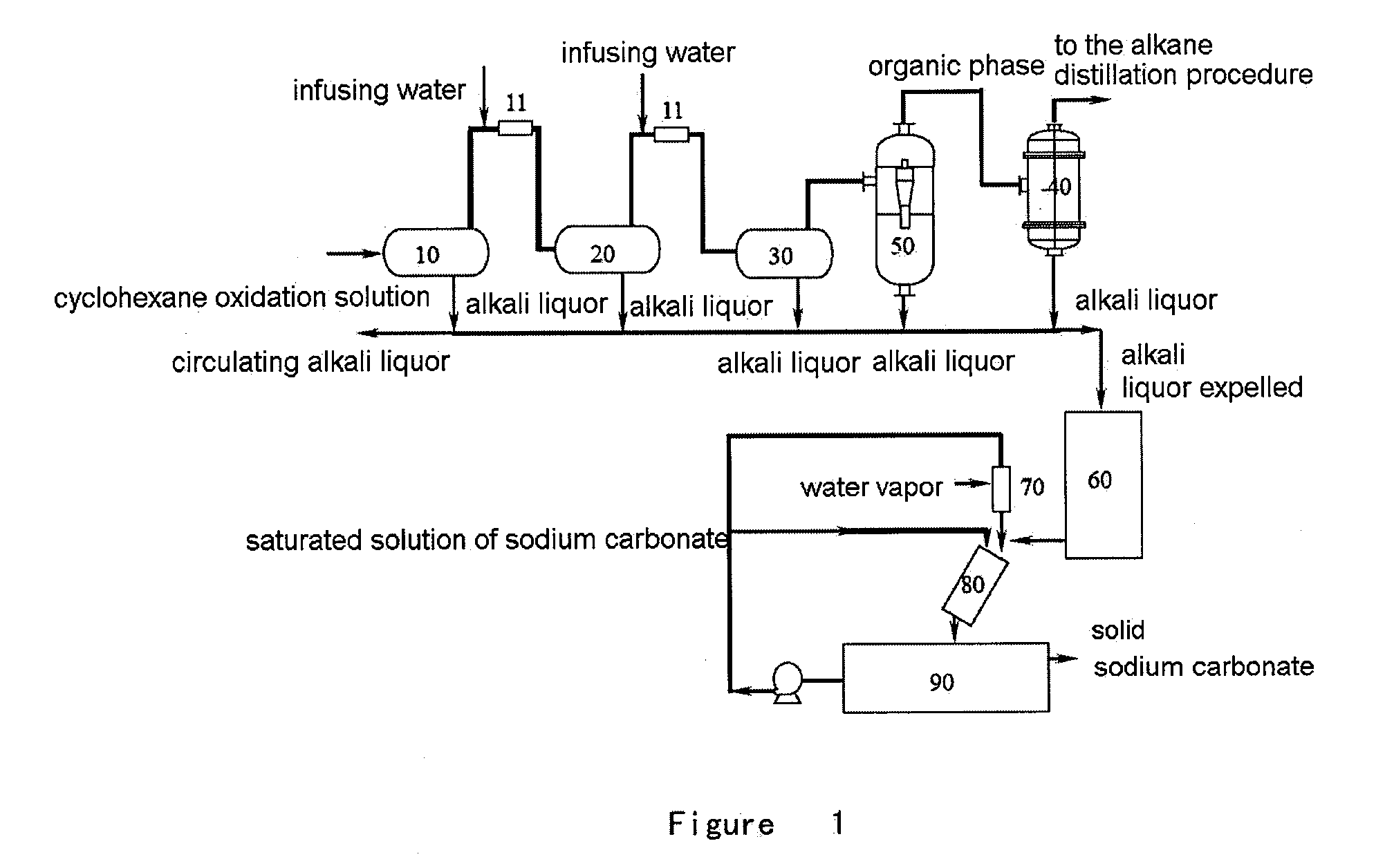Process and apparatus for separating and recovering waste alkali from cyclohexane oxidation solution
- Summary
- Abstract
- Description
- Claims
- Application Information
AI Technical Summary
Benefits of technology
Problems solved by technology
Method used
Image
Examples
examples
[0082]The invention will be explained in more detail with reference to specific examples. However, it is to be understood that these examples are only used to clarify the invention, without any intention to limit the scope of the invention. In the following examples, if no conditions are denoted for any given testing process, in general, either conventional conditions or conditions advised by manufacturers should be followed. Unless otherwise noted, all percentages and parts are based on weight.
Process for Separating the Waste Alkali Liquor from a Cyclohexane Oxidation Solution
[0083]The process for separating the waste alkali liquor from a cyclohexane oxidation solution is shown in FIG. 1.
[0084]1. Properties of the Feed
[0085]The feed is a mixture of an organic phase and an inorganic phase.
[0086]Rated flux: 275 ton / hour;
[0087]Temperature: 95-115° C., about 105° C. on average;
[0088]Density: 856.4 kg / m3 for the organic phase; 954.7 kg / m3 for the inorganic phase calculated as water at 1...
PUM
| Property | Measurement | Unit |
|---|---|---|
| Temperature | aaaaa | aaaaa |
| Temperature | aaaaa | aaaaa |
| Temperature | aaaaa | aaaaa |
Abstract
Description
Claims
Application Information
 Login to View More
Login to View More - R&D
- Intellectual Property
- Life Sciences
- Materials
- Tech Scout
- Unparalleled Data Quality
- Higher Quality Content
- 60% Fewer Hallucinations
Browse by: Latest US Patents, China's latest patents, Technical Efficacy Thesaurus, Application Domain, Technology Topic, Popular Technical Reports.
© 2025 PatSnap. All rights reserved.Legal|Privacy policy|Modern Slavery Act Transparency Statement|Sitemap|About US| Contact US: help@patsnap.com


